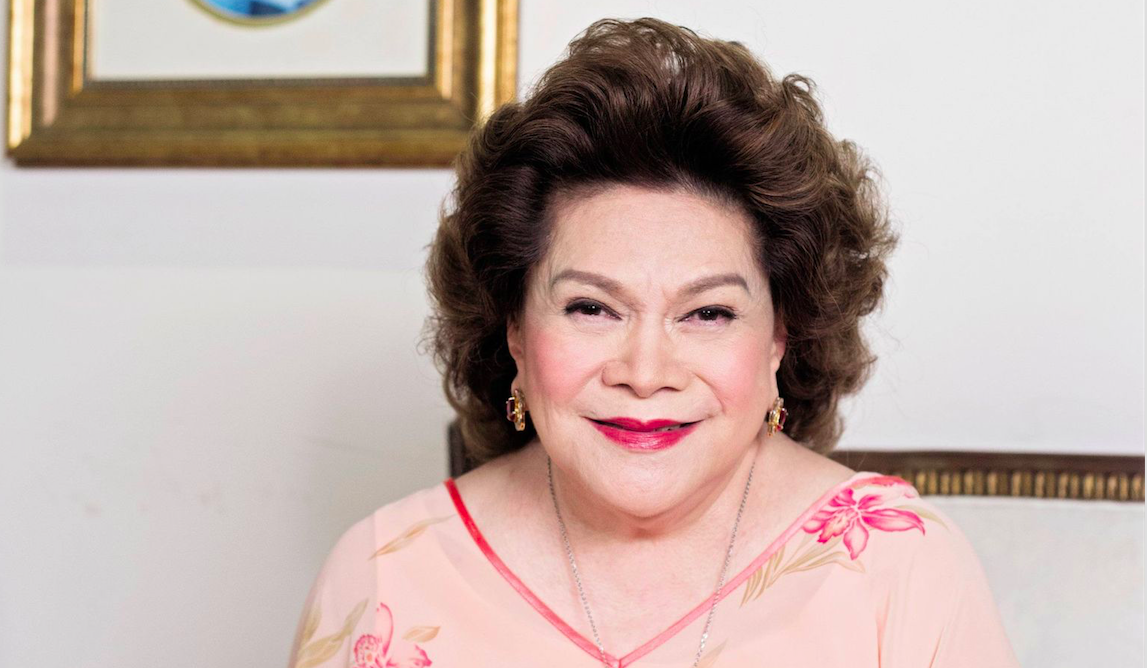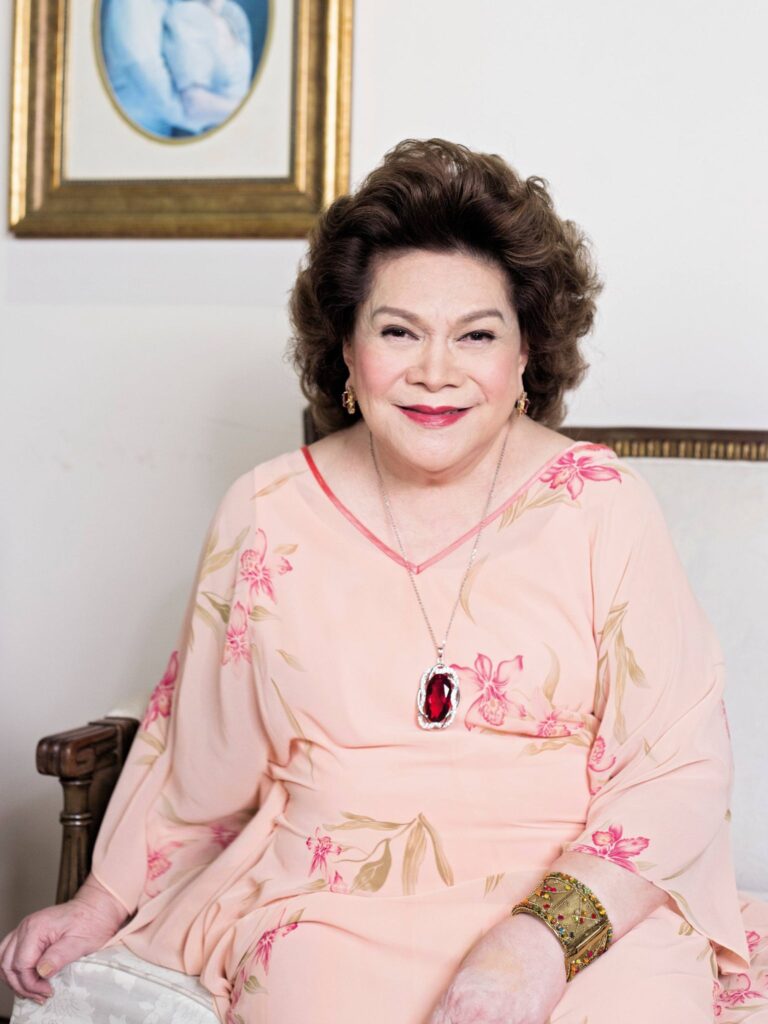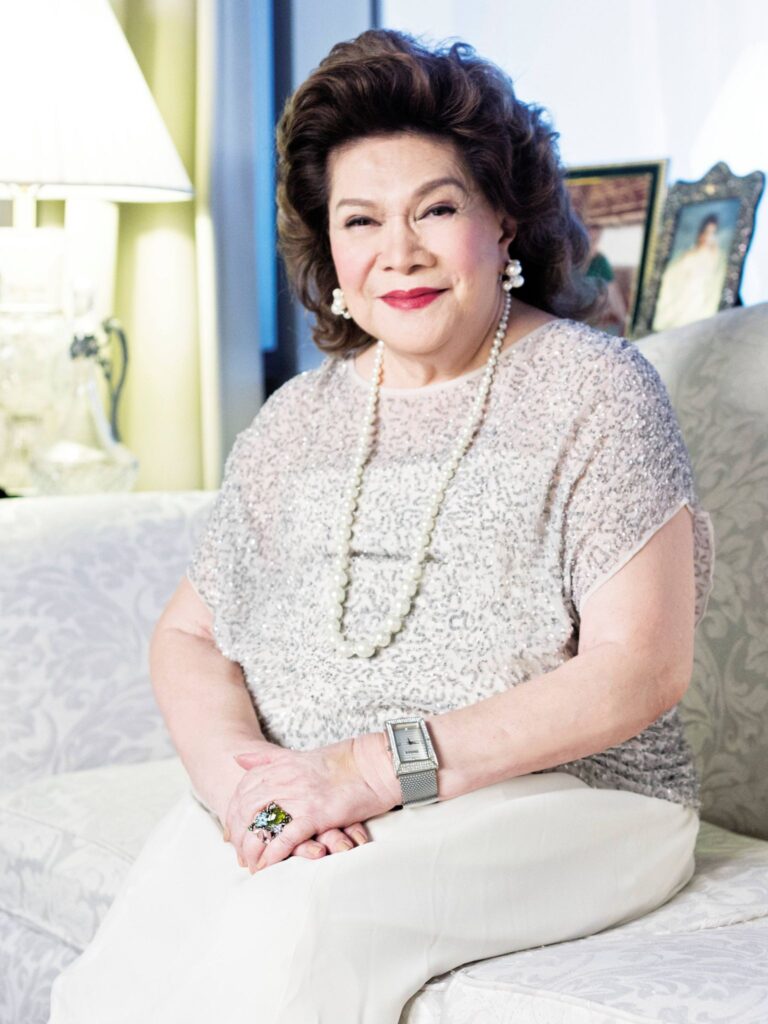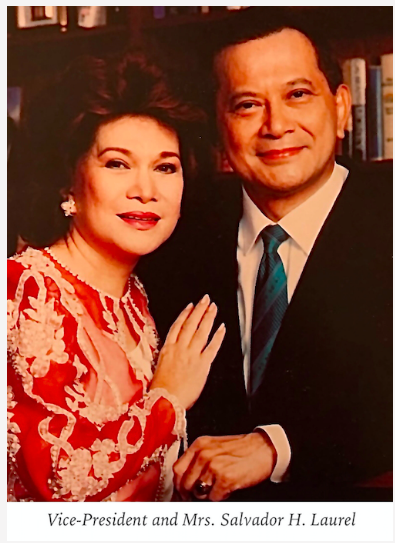By PATRICIA ROMUALDEZ
Renowned theater icon Celia Diaz Laurel has passed away last July 12 at the age of 93, according to a tribute released on her official Facebook page. The artist and philanthropist, who was recognized as PeopleAsia’s Max Soliven Lifetime Achievement Awardee in 2016, shared an intimate glimpse into her colorful life in this exclusive interview.
After decades of painting portraits and figures, creating characters onstage and publishing books about important people in her life (Days of Our Years: The Laurel Legacy — A Compilation of Selected Writings of Jose P. Laurel, Domingo Franco, Doy Laurel), Celia Diaz continues to write her own story.
In 2014 she published The Colors of My Life Celia Diaz Laurel — Painter, which chronicled her interest in drawing and painting through illuminating personal anecdotes about her early childhood in Talisay, Negros Occidental, her primary and secondary education at Assumption Convent and her University of the Philippines College of Fine Arts days, where she studied under Philippine masters Fernando Amorsolo and Guillermo Tolentino and met her husband, former Vice President Salvador “Doy” Laurel. The book is the first in a three-part series — the second will explore her theater career and the third book is a more detailed personal memoir that begins with her grandparents, who were part of the Philippine Revolution.
In 2016, Celia received the “Natatanging Gawad Buhay for Lifetime Achievement Award” in the performing arts at the 8th Philstage Gawad Buhay Awards. The award recognized her multidisciplinary contributions to the arts as a stage actress, and set and costume designer. At the ceremony, she stood up and sang “The Colors of My Life” as her son, actor Cocoy Laurel, accompanied her on piano.
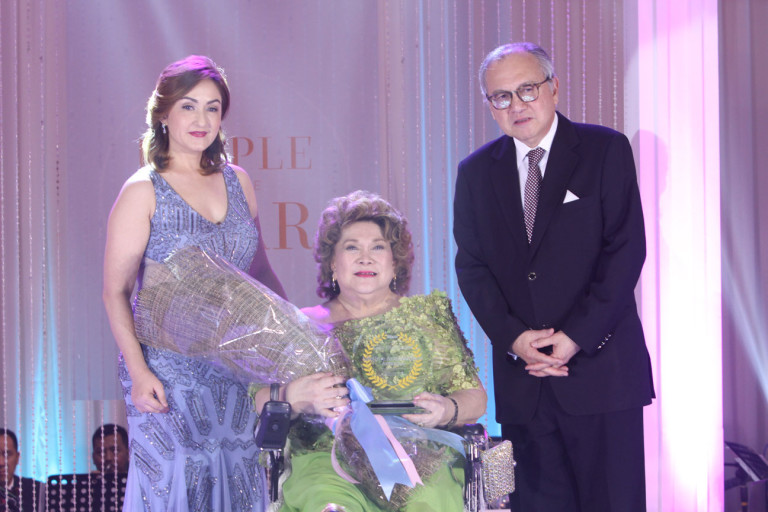
As the youngest of six children born to Anselmo Sison Diaz and Concepcion Franco, Celia was left by herself most of the time. Her brothers and sisters studied in Manila during the school year and only returned home for summer vacation. Her interest in drawing started at the age of four, when her mother bought her colored chalk and a blackboard to help her get ready for school. Drawing was a form of self-expression that helped her imagination come to life.
But she says it was the performing arts that allowed her to express herself in a new way. Though she’s been a public figure for much of her life, she still describes herself as a shy person. “My excitement started when I was doing theater, because it was something that I had felt but could not express as myself,” she says. “They were characters who were other people, and I wanted to be able to express myself through other people because I was too shy.”
When she was 13, she won her first role as the brother of St. Theresa in a play staged at Assumption Convent. “It was a short scene and I did it with all the fervor that I could possibly incite. And so began my career,” she recalls.
That passion for theater continued in UP. After she enrolled in the Fine Arts program for painting, Wilfrido Ma. Guerrero, the head of the UP theater department, invited her to join his play Forever. Celia accepted the supporting role of Consuelo before discovering that she was replacing an actress who had recently dropped out, and that her first performance would be the very next day. Despite her lack of time to prepare, the premiere was so successful that she became Guerrero’s lead actress in all the plays she joined during her four years at UP. At the same time, she was acting in radio plays for another mentor, Fr. James B. Reuter, SJ.
“I was doing theater more than I was doing painting,” she laughs. After Celia won a gold medal for her performance in Guerrero’s Frustrations, Dean Fernando Amorsolo congratulated her and told her that she honored the school with her achievements before adding, “I hope you do the same for your paintings!”
Acting came naturally to her, and it gave her the freedom to inhabit and explore other lives. “When you have a role, you are somebody else, so you do not have the limitations of your character. It is an adventure.” After graduating from UP in 1952 she moved to the US with her husband for post-graduate studies. She was supposed to study painting at Yale while he took up Law, but after she found out that there was an opening in the drama department, she changed courses.
At Yale, she learned a more scientific way to create a character. She acted in several roles, but her studies were soon interrupted. “In the middle of my course I found I was pregnant with [singer and actor] Cocoy. I think that’s where he gets his acting talent!” she laughs. She moved back to the Philippines and her husband stayed in Connecticut. “I couldn’t have the baby [in the US] because it would interrupt my husband’s studies.”
Just two weeks after she gave birth, Narciso Pimentel of Dramatic Philippines asked her to try out for a production. “I was so surprised but pleased,” she recalls. “He said it would be difficult for me because I had to speak in Tagalog and I’m a Visayan.” The role was her homecoming to Philippine theater. She eventually joined Repertory Philippines in 1968 and went on to star in 53 plays, including The King and I, The Sound of Music, My Fair Lady, The Diary of Anne Frank, and Fiddler on the Roof.
At Repertory Philippines, Celia worked closely with founder Zenaida Amador, who convinced her that her keen eye for detail would be perfect for production design. “I really wanted to do acting only, but she made me do sets, she made me do costumes, and she made me do a lot of other things, so it was very fulfilling. But if I decided for myself, I wouldn’t have done them!” she jokes. She says she designed about 100 sets — including Camelot — and at times she was both acting onstage and working behind the scenes as a designer in the same production.
How did she achieve so much in painting, acting and production design while writing books, raising eight children (Suzie, Lynnie, Cocoy, David, Larry, Stella, Kris and Iwi) and participating in public life as the wife of a prominent politician? “In my case, the opportunities came and I took them. I guess that the intention was already there and I just instinctively followed what to me at the time I was intensely interested in: the [performing] arts and painting.”
She smiles. “And of course, I had to have my family in between. My husband was a full-time job.”
She wrote extensively about her late husband’s life in public service and the sacrifices he made to unite the country in the coffee table book Doy Laurel, published in 2005. She’s been busy writing her next two books in the trilogy about her own life, and it’s been a time of personal reflection about how she can contribute to the cause of the country. “As I look back, there are other things that matter, and that’s living in a world where responsibilities arise,” she says. “Whenever I have the chance to do something significant for our country and people, even if I don’t know what it is, I would still try to do it. Right now, I have to finish my books, and then maybe in that book I can initiate something.”
She’s about halfway finished writing the book about her theater career. For her third book she says she’ll write about some of her extraordinary life experiences over the past eight decades of her life, including going on a trip around the world by boat with her family when she was seven years old and seeing Hitler’s Germany before World War II. (She even picked up German quickly and acted as her mother’s interpreter when the family traveled there.)
When asked to reflect on the past year, her thoughts once again turn to ways to help the country; she expresses optimism about what can be achieved: “It’s a year for change, if we allow it. But if we cannot do what is needed for change then we will fall back into our old self, which was not working so well. But what we have to look for really is what is good for our country. And that’s very difficult to come to because self comes in between. If it is possible, we should look at the good of other people in this time because it’s an opportune time. It’s time for change and I believe that we’re in the right direction—if we will allow it.”

